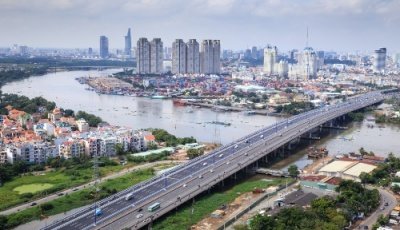The fourth edition of Indometal has concluded last month. Held at the JI Expo from 17 – 19 October 2018, the exhibition welcomed over 6,700 quality visitors from 25 countries, which is a 15 percent increase from its last edition.
This year’s exhibition also saw visiting groups from a diverse mix of industries across Indonesia including leading companies such as Barata Indonesia, Cikarang Perkasa Manufacturing, Epiterma Mas Indonesia, Growth Asia, Honda Power Products Indonesia, Hyundai, Isuzu, Inalum and more. While from outside of Indonesia, the exhibition also welcomed visitors from countries such as France, Germany, Japan, and visiting delegations that represent various metal and steel sectors from the Czech Republic, as well as the China Foundry Association.
Driven by the expertise of GIFA, METEC, THERMPROCESS and NEWCAST by the Messe Düsseldorf Group, the exhibition had presented showcases in foundry technology, casting products, metallurgy and thermoprocess technology. It also hosted 203 exhibiting companies from 22 countries, including national pavilions and country groups from China, Germany, Indonesia, Italy and Taiwan. This enabled the industry to leverage on the vast knowledge presented and enhance their manufacturing and processing capabilities.
Indonesia: A Marketplace Of Opportunities For Companies
During the keynote address at the opening of the seminar by Mr. Doddy Rahadi, Director of Metals Industry, Ministry of Industry, Republic of Indonesia, emphasis was placed on the significance and importance of steel as a raw material in infrastructure projects and many industrial sectors. Mr. Rahadi also reiterated Indonesia’s need to continue growing its steel industry in order to meet the demands of the domestic market. This reflects the recent government focus on Indonesia’s Making Indonesia 4.0 initiative and the country’s enhanced upstream investments, which has led to the government to target investments on oil and gas projects which is expected to reach US$17.04 billion this year according to the Energy Ministry. Commenting on Indonesian’s strong market potential and prospects was Ms Sherry Liu, Chief of Marketing Department from Sinomach Foundry and Metal Forming, who said: “In China, the foundry and metal forming equipment market is already at its optimum, we want to explore more markets along with the ‘One Belt, One Road’ initiative. The market in Indonesia is booming, so indometal is a good opportunity for us to seek more business to market our products.”
Her thoughts were echoed by the Korean inorganic binder producers, Dr Revotek, who shared that their company achieved the objectives that they had set out for their first-time participation at indometal. Mrs Park Jaepyeong, the company’s representative, said: “Throughout this exhibition, we have learnt a lot about the metal and steel industry in Indonesia and had a lot of meetings with buyers and companies. Indonesia is an emerging market and the future consumption of metal is great. In that perspective, the industry here has a bright future, and we will come back again to expand our market reach not only to Indonesia, but to the rest of the region. “
A Busy Show Floor Reflecting The Needs Of The Industry
The strong visitor attendance at indometal 2018 alongside the 70 percent participation of international companies to the exhibition, further confirmed indometal’s ability to be a trade platform that provides qualified leads and business opportunities for the metal and steel sectors. “We recognise the importance of cross-industry collaboration and discussion in today’s context, and along with it the ‘in-roads’ required for such strategic leverages. We are pleased to be that choice marketplace for new partnerships and dealerships to be formed between international and local businesses,” said Mrs Rini Sumardi, Director of Wahana Kemalaniaga Makmur, PT (WAKENI), which is a joint organiser of indometal.
Similar sentiments were gathered from visitors from the bustling show floor, and Mr. Ilangovan M, from RM Netra Exim, India, has said that, “This is my first visit to indometal, I found many good testing machines for my company, and at the same time, I am also happy with the wide range of products on the show floor.” His comments resonated with Ms Juliany, Sales Manager of CV Wahana Niaga Distribusi, who commented that, “Our main objective is to add new products such as galvanised steel. I am very interested in some of the products from Krakatau Steel and Gunung Steel Group, and I will bring this new information back to my company for further discussions with management.”
Thought-Leadership At Concurrent Events
The exhibition was also a platform for industry professionals to share best practices through the series of seminars and technical presentations. Mr.Wallter Doloksaribu, Junior Manager of Inalum (Persero), said: “I am from the smelting business and I learnt a lot from the technical seminar conducted by Wesman Thermal Engineering Processes, as I am looking for innovations in combustion and burners. They present a technology that is energy-saving of up to 15 percent, which is something that I will share with my company.”
As a knowledge promotion and sharing platform, the trade fair also featured a series of content-rich conferences by leading associations and organisations that were well-attended by over 200 participants from around the region. Beyond covering trending industry topics, new innovations, applications and technologies, as well as a comprehensive outline of market developments in Indonesia and the region, the conferences, also provided a beneficial forum for industry players to discuss and explore possible collaborations across the smelter, mineral processing, aluminium and motor vehicle industries, and even on manpower and workforce issues dotted by shifts in the demand and supply curve.
The next edition of indometal will take place in October 2020 at the Jakarta International Expo, Kemayoran. For more information, please visit www.indometal.net.
WANT MORE INSIDER NEWS? SUBSCRIBE TO OUR DIGITAL MAGAZINE NOW!
FOLLOW US ON: LinkedIn, Facebook, Twitter













